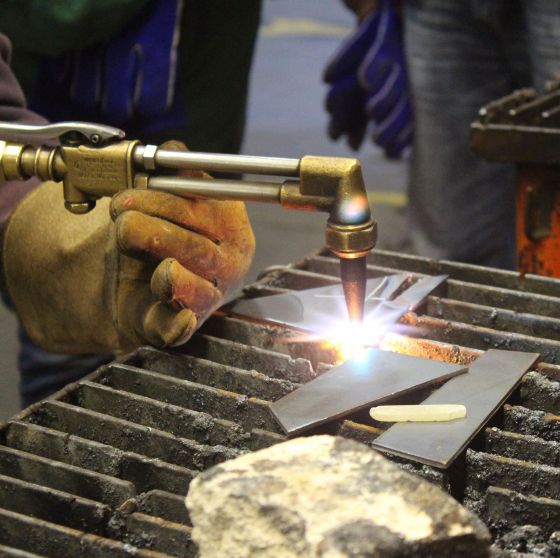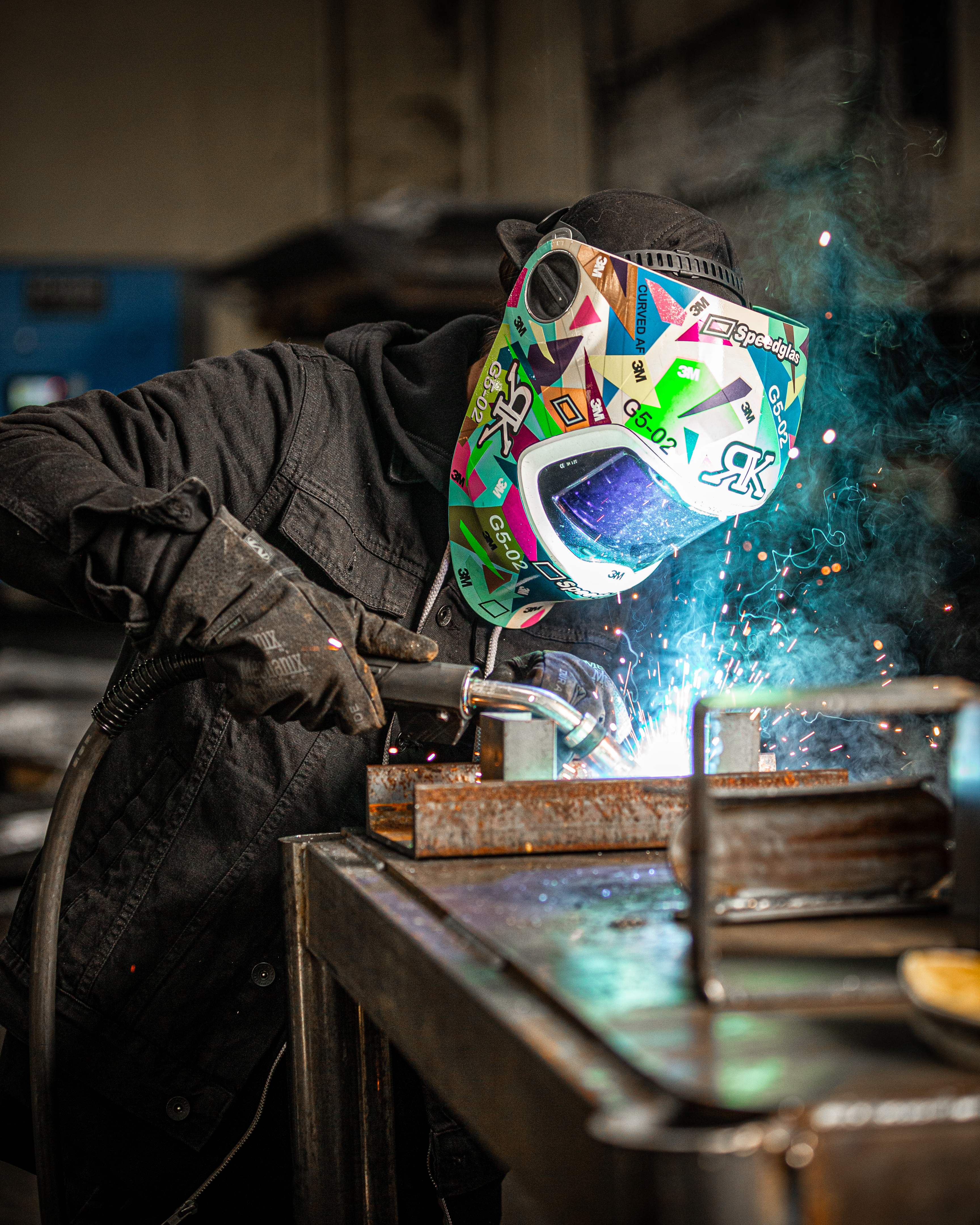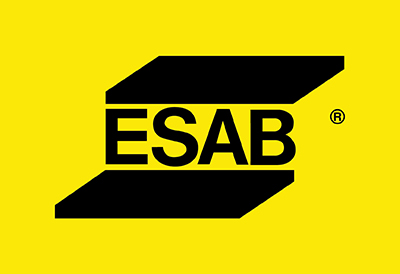To practice welding at home, start by setting up a safe workspace and obtaining the essential equipment. Invest in protective gear to ensure safety during practice.
Engaging in home welding projects requires not just the mastery of techniques, but also a strict adherence to safety protocols. Your workspace should be well-ventilated, away from flammable materials, and equipped with a fire extinguisher. Beginning with simple welding exercises, such as joining metal plates, helps to gradually build your skills.
Utilizing instructional videos and manuals, you can self-teach various welding methods like MIG, TIG, or stick welding based on your equipment. The key to proficiency is consistent practice, coupled with feedback from more experienced welders, which you can find through online forums or local community workshops. Remember, patience is crucial, as developing the dexterity and precision for welding will take time and dedication.

Credit: www.thecrucible.org
Getting Started With Welding At Home
Discovering the world of welding opens the door to endless creative and practical applications. Embarking on this journey at home can seem daunting, but with a few simple steps, you’ll be welding with confidence. First, choose the right equipment and set up your workspace. Stay safe, and let’s ignite your welding passion from the comfort of your own garage or workshop!
Choosing The Right Welding Equipment
Selecting appropriate gear is critical for success. Welders come in different types for various materials and skill levels. Begin with an entry-level welder, either MIG or stick, as they are user-friendly.
- MIG Welders – great for thin metals and clean welds.
- Stick Welders – versatile for outdoor use and thicker materials.
- Welding Helmet – auto-darkening helmets offer better protection.
- Gloves and Protective Clothing – ensure full coverage to prevent burns.
Don’t forget accessories! Clamps, magnets, and a hammer are just as vital for a seamless experience.
Setting Up Your Workspace
A secure and organized workspace is foundational for welding at home. Ample ventilation is non-negotiable to clear fumes. Keep your space clean and free of clutter to prevent accidents. Proper lighting is paramount to ensure precision in your work.
| Workspace Component | Importance | Recommendation |
|---|---|---|
| Ventilation | Clears hazardous fumes | Install exhaust fans or work outside |
| Organization | Prevents accidents | Use shelving and pegboards |
| Lighting | Ensures precision | Bright, focused overhead lights |
Fire safety is paramount. Keep a fire extinguisher nearby. Always have a first aid kit on hand. With these measures in place, you’re ready to begin your at-home welding adventures safely and effectively!

Credit: en.wikipedia.org
Ensuring Safety Measures
Practicing welding at home requires careful attention to safety measures. The intense heat and light of welding pose risks. Proper safety gear and a suitable environment are essential. This ensures a secure and efficient welding experience.
Wearing Appropriate Protective Gear
Protective gear shields you from sparks, heat, and harmful rays.
- Welding helmet: Protects your eyes and face.
- Fire-resistant gloves: Guards your hands.
- Leather apron: Safeguards your body.
- Safety shoes: Keeps your feet safe.
Always check gear for damage before starting.
Working In A Well-ventilated Area
Good ventilation is critical when welding. Avoid inhaling harmful fumes.
| Area Feature | Importance |
|---|---|
| Open space | Reduces fume concentration |
| Exhaust fan | Clears airborne particles |
| Fresh air supply | Replaces contaminated air |
Ensure the workspace is free of flammable materials. Keep a fire extinguisher accessible.
Learning Different Welding Techniques
Welders can create strong bonds between metals. Practicing at home needs safety and the right tools. Different techniques exist, each with its use and skill level. Learning these skills lets welders tackle diverse projects.
Understanding Mig Welding
MIG welding is beginner-friendly. It uses a wire fed through a gun to join metals. Here’s how to start:
- Set up your MIG welder according to the manual.
- Choose the right wire and gas for your project.
- Practice on scrap metal to get a feel for the feed rate and movement.
Common metals for MIG welding are steel and aluminum. It’s used in auto repair and making metal furniture.
Mastering Tig Welding
TIG welding requires more skill. It uses a tungsten electrode to create the weld. Start with these steps:
- Assemble your TIG welding equipment properly.
- Select the right electrode and filler material.
- Hold the torch in one hand and the filler rod in the other.
This technique is great for precision welding. Use TIG for projects that need strong, clean welds like kitchen equipment.
Practice these techniques safely. Wear protective gear, and keep a fire extinguisher nearby. Work in a well-ventilated space. Happy welding!
Practicing Welding On Scrap Metal
Entering the world of welding offers a thrilling mix of challenges and rewards. Mastering this skill requires patience, practice, and precision. One of the most effective approaches to enhancing your welding abilities is by utilizing scrap metal. Through varied exercises on these leftovers, you’ll gain confidence and experience without the pressure of perfect outcomes.
Preparing The Metal Surface
Starting with a clean surface is crucial for any welder aiming to achieve strong and clean welds. Rust, paint, or oil on scrap metals can contaminate your weld, leading to poor quality and potentially unsafe outcomes. The preparation phase lays the groundwork for your entire welding practice session.
- Inspect the metal for any coatings or contaminants.
- Use a wire brush or grinder to remove rust and paint spots.
- Wipe the surface with a degreaser to eliminate oily residues.
- Wire brush
- Angle grinder
- Degreasing agent
Practicing Different Weld Joints
Perfecting various joint types is essential to becoming a proficient welder. Each joint style serves distinct purposes and presents unique challenges. Mastery of these forms allows for flexibility across a diverse range of projects.
| Joint Type | Description |
|---|---|
| Butt joint | Joining two pieces end to end |
| Corner joint | Connecting at a 90° angle |
| T-joint | Joining a piece at a 90° angle to the middle of another |
| Lap joint | Laying one piece atop another |
- Start with simpler joints like butt and corner joints.
- Progress to more complex configurations like lap and T-joints.
- Practice various techniques, including MIG, TIG, and stick welding.
Improving Welding Skills
Welders know that skill makes a world of difference in quality. Home practice is key to mastery. Let’s dive into techniques for skill improvement right where you are.
Perfecting Weld Bead Appearance
For a professional look, consistent bead appearance is essential. Begin with a clean workspace. Use clamps to hold pieces in place. Select the right electrode size and type. Set your welding machine to the correct amperage.
Practice running beads on scrap metal first. Start with straight lines. Focus on travel speed and arc length. Keep them steady. Check your work. Look for uniform width and depth. Make adjustments as needed.
Consistent practice leads to a steady hand. A steady hand crafts beautiful beads.
Controlling Weld Pool And Penetration
Control is critical. It determines weld strength and quality. Begin with the right welder settings. Your material thickness dictates this.
| Material Thickness | Welder Setting |
|---|---|
| Light | Lower amperage |
| Thick | Higher amperage |
Watch the weld pool. It tells you everything. Too cold, and it won’t penetrate. Too hot, and it might burn through. Aim for a pool the size of the weld bead you want. Adjust your travel speed to control the pool’s size.
- Keep the arc at the leading edge of the pool.
- Focus on consistent, appropriate penetration.
- Move smoothly, avoid lingering too long in one spot.
With patience and practice, controlling the weld pool becomes second nature.

Credit: esab.com
Troubleshooting Common Welding Problems
Mastering welding takes practice and knowing how to fix common issues. Smooth, strong welds are your goal. Let’s troubleshoot together.
Preventing Weld Cracks
Weld cracks can weaken your project. Good preparation helps a lot. Remember these points:
- Clean your materials before you start welding.
- Choose the right rod for your metal type.
- Heat the metal evenly and avoid rushing the weld.
Stick to the right techniques, and you’ll see fewer cracks.
Avoiding Excessive Spatter
Spatter is messy and can ruin the finish of your weld. Beat spatter with these steps:
- Check your equipment settings before welding.
- Ensure steady wire feed for a clean arc.
- Adjust shielding gas flow to reduce turbulence.
Spatter should reduce when you follow these tips. Happy welding!
Exploring Advanced Welding Projects
Welcome to the next level of your welding journey! With basic skills under your belt, it’s time to explore advanced welding projects at home. These projects are not just a test of your welding capability, but also a platform for creativity and practical solution-making. Let’s dive into crafting bespoke metal art and fabricating useful objects for around the house.
Creating Metal Sculptures
Unleash your artistic side by creating metal sculptures. This project blends creativity with technical skill. Start with simple shapes and patterns. As you gain confidence, tackle more complex structures. Consider these points:
- Select the right materials, such as mild steel or aluminum.
- Design a rough sketch of your desired sculpture.
- Practice shaping and joining techniques on scrap metal.
- Ensure to maintain proper ventilation during the process.
Finished sculptures can serve as personal artwork or unique gifts for friends and family.
Fabricating Functional Metal Objects
Fabricating functional items is accomplished by moving beyond aesthetics to usability. Items like custom shelf brackets or a grill for the barbecue are great starters. Here’s a simple guide to begin:
| Step | Instruction | Tips |
|---|---|---|
| 1 | Identify what item you want to create. | Keep it practical and useful. |
| 2 | Gather necessary measurements. | Accuracy is key for functionality. |
| 3 | Cut and prepare your metal pieces. | Wear protective gear at all times. |
| 4 | Tack weld the pieces together. | Check alignment before full welds. |
| 5 | Complete the welds and finish the object. | Grind down any rough edges. |
Remember to allow time for practice and perfection on these useful homemade additions.
Seeking Guidance And Feedback
Mastering welding takes patience, practice, and support. Seeking guidance and feedback is essential to improve your home welding skills. Experts can spot mistakes and offer valuable tips that DIY books or videos might miss. Let’s dive into ways to connect with the welding community and get professional advice, right from the comfort of your home.
Joining Welding Communities
Become part of a welding community online to share experiences and get feedback. You’ll find fellow enthusiasts on forums and social media groups where you can post photos or videos of your welding projects. Here’s how to start:
- Search for forums focused on welding and join discussions.
- Follow welding hashtags on social platforms to find communities.
- Attend virtual meetups to connect with other welders.
Remember: Always respect community rules and be open to constructive criticism. It helps you grow.
Getting Professional Advice
Even though you’re practicing at home, you can still get mentorship from seasoned welders. Here are some steps:
- Contact local welding shops and ask if they offer consultations or mentorship programs.
- Look for online courses with interactive components where instructors give personal feedback.
- Consider hiring a welding tutor for personalized guidance through video calls.
Keep a notebook to jot down tips and corrections. Apply them in your next welding session. Your skills will improve faster with expert advice.
Frequently Asked Questions Of How To Practice Welding At Home
What Is Home Welding Practice Safety?
Proper safety gear, including a helmet, gloves, and fire-resistant clothing, is essential for home welding to prevent injuries and accidents.
Which Welder Is Best For Beginners?
For beginners, a MIG welder is often recommended due to its ease of use and versatility in welding various materials.
Can I Learn Welding On My Own?
Yes, with resources like online tutorials, books, and practice kits, you can start learning welding at home at your own pace.
What Materials Do I Need To Start Welding?
Starting with steel or aluminum, a welding machine, electrodes, and safety gear is crucial for any beginner welder’s toolkit.
How Can I Improve Welding Skills Quickly?
Regular practice on scrap metal, learning from professional welders, and constantly challenging yourself with new projects can rapidly enhance your welding skills.
Conclusion
As you embark on home welding projects, remember safety and practice are key. Begin with basic techniques and simple projects. Stay patient; skill growth takes time. Seek feedback from community forums or local workshops. Embrace each challenge as a learning opportunity, and watch your welding skills flourish at your own pace.
Happy welding!
